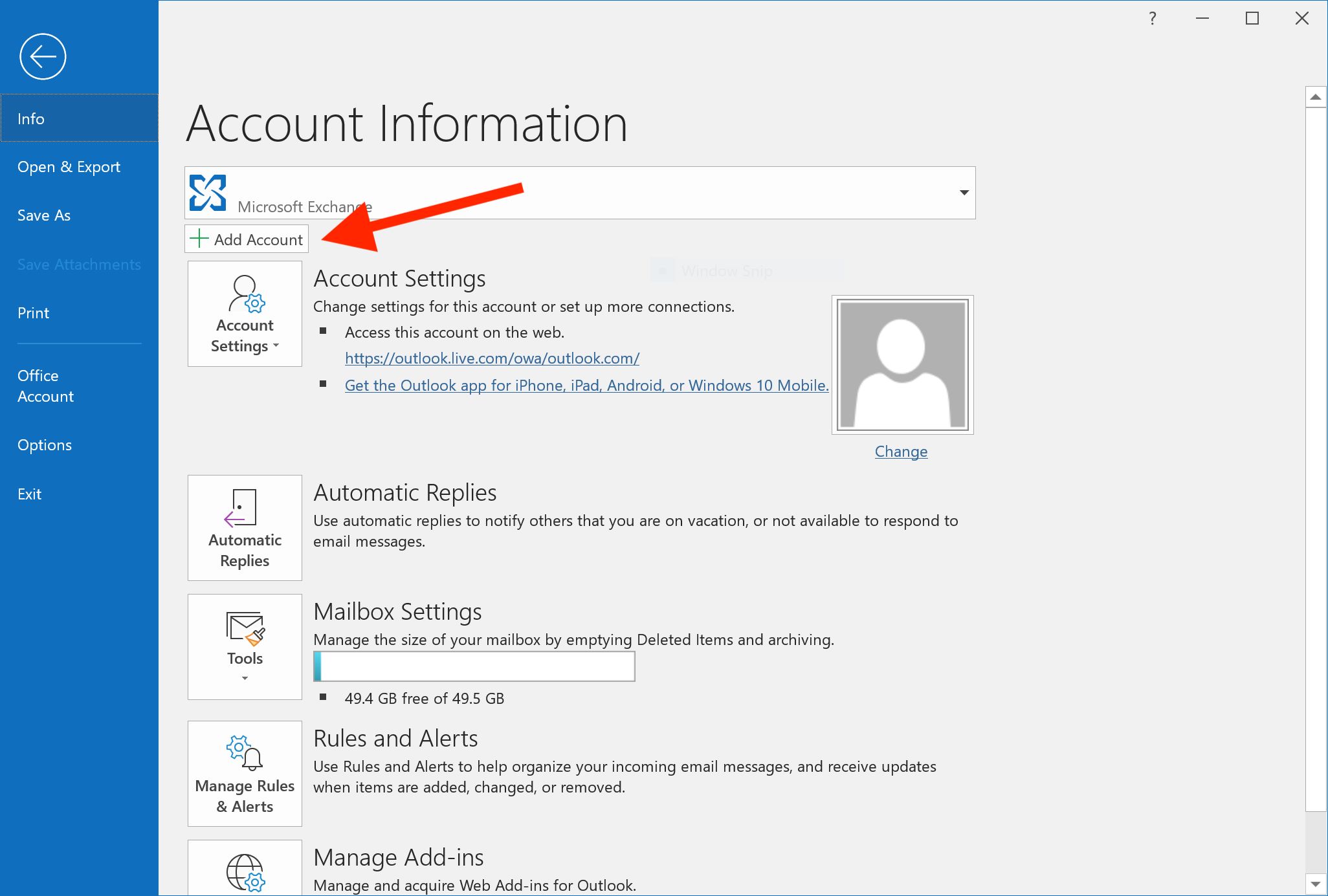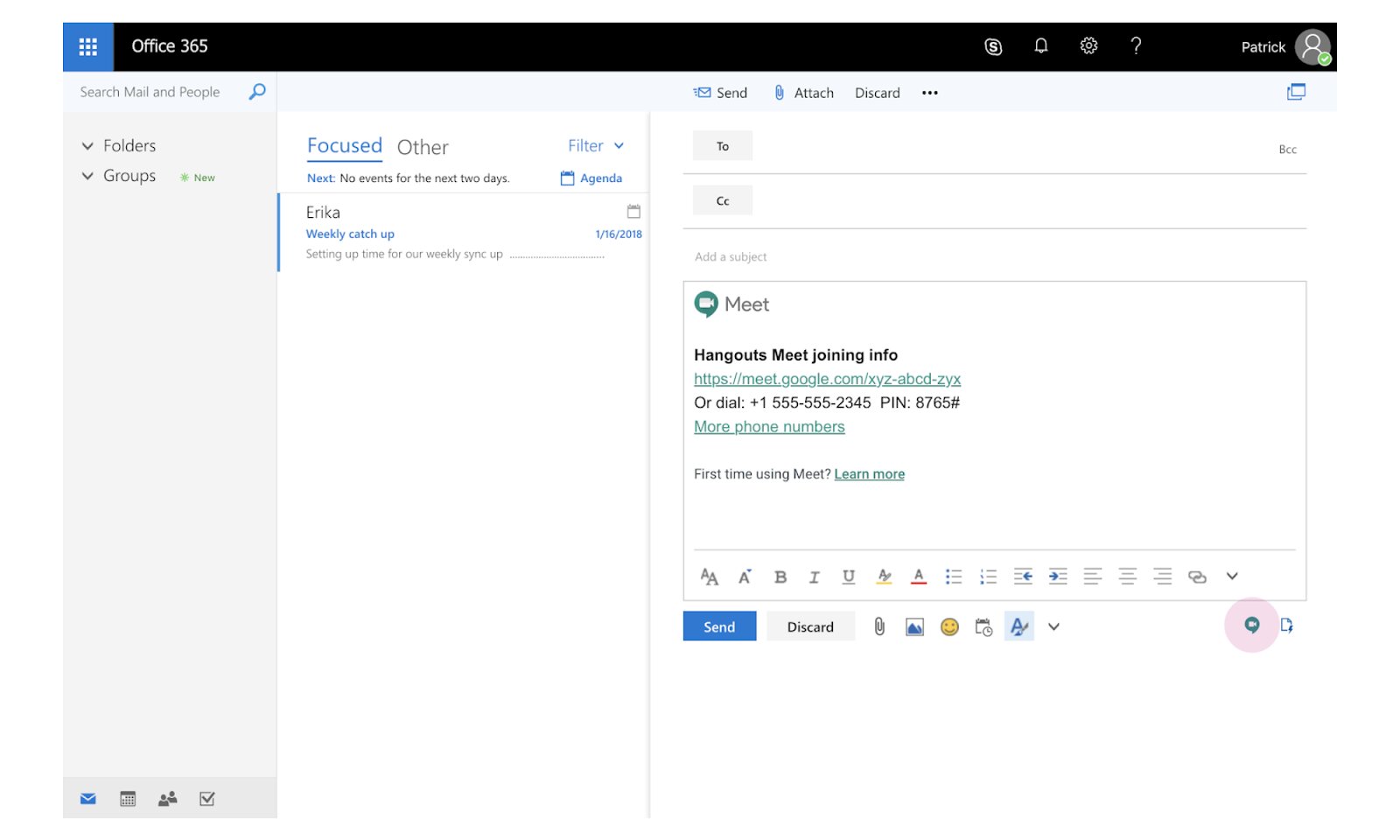Introduction
Welcome to the tutorial on how to change your password in Outlook Email. Keeping your email password up to date is essential for maintaining the security and privacy of your account. By regularly changing your password, you can protect your personal information from unauthorized access and reduce the risk of potential security breaches.
Outlook Email, a popular email service provider, offers a straightforward process for changing your password. In this guide, we will walk you through the necessary steps to help you update your password and ensure the continued security of your email account.
Whether you suspect that your password has been compromised or simply want to strengthen your account security, learning how to change your password in Outlook Email is an important skill to have. By following the steps outlined in this tutorial, you can easily modify your password and have peace of mind knowing that your account is better protected.
Now, let’s dive into the step-by-step instructions on how to change your password in Outlook Email. By the end of this tutorial, you’ll be equipped with the knowledge and confidence to update your password whenever necessary.
Step 1: Login to Outlook Email
The first step to changing your password in Outlook Email is to log in to your account. Follow these instructions to access your Outlook Email account:
- Open your preferred web browser and go to the Outlook Email login page.
- Enter your email address or username in the provided field.
- Next, type in your current password. Make sure you enter it correctly to avoid any login errors.
- Once you have entered your login credentials, click on the “Sign In” button to proceed.
- If the entered details are correct, you will be redirected to your Outlook Email inbox.
It is important to ensure that you are logging in from a trusted device and a secure internet connection. This will help protect your account’s security and prevent any unauthorized access.
Keep in mind that the login steps may vary depending on the version of Outlook Email or the platform you are using (web browser, mobile app, etc.). However, the general process remains the same: entering your email address and password to gain access to your account.
Once you have successfully logged in, you are now ready to proceed to the next step and change your Outlook Email password.
Step 2: Go to Account Settings
After logging in to your Outlook Email account, the next step is to navigate to the account settings page. Here’s how you can do it:
- Once you are in your Outlook Email inbox, locate the gear icon or the “Settings” option. This is usually located in the top right corner of the screen.
- Click on the gear icon or the “Settings” option to open the drop-down menu.
- In the drop-down menu, find and select the “Account Settings” or “Your Account” option. This will take you to the Outlook Email account settings page.
Alternatively, depending on the version and layout of your Outlook Email interface, the account settings page may be accessible through a different menu or tab. Take your time exploring the options available until you find the relevant section.
Accessing the account settings page is crucial as it provides you with the necessary options to change various account details, including your password.
Once you have successfully located the account settings page, you can proceed to the next step to access the security options within your Outlook Email account.
Step 3: Access Security Options
After reaching the account settings page in Outlook Email, the next step is to access the security options. Here’s how you can do it:
- Once you are on the account settings page, look for the “Security” or “Privacy & Security” tab. Click on it to proceed.
- In the security settings section, you may find various options related to account security, such as password, two-factor authentication, and recovery options.
- Locate and click on the “Change Password” or similar option. This will allow you to modify your Outlook Email password.
Depending on the version of Outlook Email you are using, the path to access the security options may vary slightly. However, most versions will have a dedicated security tab or menu where you can find the necessary options.
Accessing the security options is an important step as it grants you the ability to change your password and implement additional security measures to protect your Outlook Email account.
Once you have successfully accessed the security options, you are now ready to proceed with changing your Outlook Email password in the next step.
Step 4: Change Password
Now that you have accessed the security options in your Outlook Email account, it’s time to change your password. Follow these steps to set a new password:
- In the password settings page, you will typically find a field labeled “Current Password.” Enter your current password in this field for verification purposes.
- Next, locate the “New Password” field. Choose a strong and unique password for your Outlook Email account.
- Make sure your new password meets the security requirements mentioned on the page. These requirements may include a minimum character length, a combination of letters, numbers, and special characters, and the avoidance of common or easily guessable passwords.
- Type your new password in the designated field. As you type, you may see an indicator displaying the strength or validity of your password.
- It is advisable to avoid using personal information or easily guessable words as your password. Instead, opt for a combination of uppercase and lowercase letters, numbers, and special characters to enhance the security of your account.
- Once you have entered your new password, retype it in the “Confirm New Password” field. This ensures that you have entered the password correctly without any typographical errors.
- After double-checking the entries, proceed to save the changes or update your password.
By successfully following these steps, you have now changed your Outlook Email password. Congratulations! Your account is now equipped with a new password, providing enhanced security and protection against unauthorized access.
Remember to keep your password confidential and avoid sharing it with anyone. Changing your password periodically is a good practice to maintain the security of your Outlook Email account.
In the next step, we will discuss the importance of confirming your new password to ensure that the changes are implemented successfully.
Step 5: Confirm New Password
After changing your password in Outlook Email, it is important to verify and confirm that the changes have been implemented successfully. Follow these steps to confirm your new password:
- Ensure that you are still on the password settings page or navigate back to it using the account settings menu.
- Once you are on the password settings page, locate the “Confirm New Password” field.
- Retype your new password exactly as you entered it in the previous step.
- Double-check the spelling and accuracy of the password to avoid any discrepancies.
- When you are confident that the password has been entered correctly, proceed to save or update the changes to confirm your new Outlook Email password.
Verifying your new password is essential to ensure that the changes have taken effect and to prevent any login issues in the future. By confirming the password, you can be confident that you will be able to access your Outlook Email account using the newly set password.
It is worth mentioning that some email providers may require additional steps or provide additional options for password confirmation. Ensure that you follow the instructions provided by Outlook Email or consult their support documentation for any specific guidelines.
With the new password confirmed, you can proceed to the next step and update your password recovery options to further enhance the security and account management of your Outlook Email.
Step 6: Update Password Recovery Options
After changing your password in Outlook Email, it’s essential to update your password recovery options. These options serve as a backup in case you forget your password or need to reset it in the future. Follow these steps to update your password recovery options:
- On the account settings page, look for the “Security” or “Privacy & Security” tab, similar to the earlier step where you accessed the security options.
- Within the security settings, locate the “Password Recovery” or “Account Recovery” section.
- Click on the relevant option to access and update your password recovery options.
- Choose the desired password recovery method(s) from the available options. Popular options include email verification, phone number verification, security questions, or alternative email addresses.
- For email verification, ensure that the email address associated with your account is up to date and accessible.
- If you opt for phone number verification, make sure the provided phone number is correct and that you have access to it.
- For security questions, select questions that are memorable to you but difficult for others to guess.
- Follow the instructions on the page to complete the process of updating your password recovery options.
Updating your password recovery options adds an extra layer of security to your Outlook Email account. It ensures that you have multiple ways to recover your account and reset your password if needed.
Regularly reviewing and updating your password recovery options is recommended to ensure they are current and accessible. This can help prevent potential issues in the future, such as being locked out of your account due to forgotten credentials.
After successfully updating your password recovery options, you are now one step closer to ensuring the security and accessibility of your Outlook Email account.
Step 7: Verify Changes and Log Out
The final step in changing your password in Outlook Email is to verify the changes you made and securely log out of your account. Follow these steps to complete the process:
- After updating your password and password recovery options, take a moment to review the changes you made.
- Ensure that your new password and password recovery options are accurate and up to date.
- Double-check that you have followed all the necessary steps in this tutorial to change your password effectively.
- Once you have verified the changes, it’s essential to log out of your Outlook Email account.
- Locate the “Log Out” or “Sign Out” button. This is usually found in the top right corner of the Outlook Email interface or within the account settings menu.
- Click on the “Log Out” or “Sign Out” button to safely exit your Outlook Email account.
Logging out of your account is an important security measure as it prevents unauthorized access to your emails and personal information. It is especially crucial if you are using a shared or public computer.
By following these steps and verifying the changes you made, you have successfully changed your password in Outlook Email and taken the necessary precautions to protect the security of your account.
Remember to keep your new password confidential and avoid sharing it with anyone. Additionally, consider enabling two-factor authentication or other security measures offered by Outlook Email to further enhance the protection of your account.
With your Outlook Email password successfully changed and your account securely logged out, you can now enjoy the peace of mind that comes with knowing your account is better protected.
Conclusion
Changing your password in Outlook Email is a necessary step to protect the security and privacy of your account. By following the step-by-step instructions outlined in this tutorial, you have learned how to successfully change your password in Outlook Email and enhance the overall security of your account.
Remember, regularly updating your password is a proactive measure to safeguard your emails and personal information from unauthorized access. It is recommended to change your password periodically, especially if you suspect any security risks or if it has been a long time since your last password change.
In addition to changing your password, we discussed the importance of accessing the account settings, updating password recovery options, and verifying the changes made. These steps ensure that you have taken all necessary precautions to maintain the security of your Outlook Email account.
Lastly, always remember to create a strong and unique password. Avoid using easily guessable phrases or personal information that can be easily associated with you. The use of a combination of letters, numbers, and special characters will significantly bolster the strength of your password.
Stay vigilant and keep an eye on any suspicious activities related to your Outlook Email account. If you ever suspect any unauthorized access or unusual behavior, it is recommended to contact Outlook Email support for assistance.
By following the steps outlined in this tutorial, you have empowered yourself with the knowledge and skills to change your password in Outlook Email and take control of your account’s security. Implement these steps regularly, and you can enjoy a safer and more secure email experience.

























